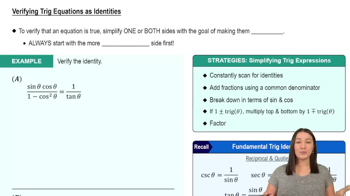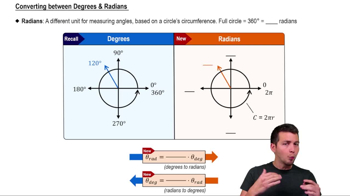Table of contents
- 0. Functions7h 52m
- Introduction to Functions16m
- Piecewise Functions10m
- Properties of Functions9m
- Common Functions1h 8m
- Transformations5m
- Combining Functions27m
- Exponent rules32m
- Exponential Functions28m
- Logarithmic Functions24m
- Properties of Logarithms34m
- Exponential & Logarithmic Equations35m
- Introduction to Trigonometric Functions38m
- Graphs of Trigonometric Functions44m
- Trigonometric Identities47m
- Inverse Trigonometric Functions48m
- 1. Limits and Continuity2h 2m
- 2. Intro to Derivatives1h 33m
- 3. Techniques of Differentiation3h 18m
- 4. Applications of Derivatives2h 38m
- 5. Graphical Applications of Derivatives6h 2m
- 6. Derivatives of Inverse, Exponential, & Logarithmic Functions2h 37m
- 7. Antiderivatives & Indefinite Integrals1h 26m
- 8. Definite Integrals4h 44m
- 9. Graphical Applications of Integrals2h 27m
- 10. Physics Applications of Integrals 2h 22m
3. Techniques of Differentiation
The Chain Rule
Problem 3.7.106b
Textbook Question
Deriving trigonometric identities
b. Verify that you obtain the same identity for sin2t as in part (a) if you differentiate the identity cos 2t = 2 cos² t−1.
 Verified step by step guidance
Verified step by step guidance1
Step 1: Start with the given identity for \( \cos 2t \), which is \( \cos 2t = 2 \cos^2 t - 1 \).
Step 2: Differentiate both sides of the equation with respect to \( t \). For the left side, use the derivative of \( \cos 2t \), which is \(-2 \sin 2t\) using the chain rule.
Step 3: For the right side, differentiate \( 2 \cos^2 t - 1 \). Use the chain rule to differentiate \( 2 \cos^2 t \), which gives \( 2 \times 2 \cos t \times (-\sin t) = -4 \cos t \sin t \). The derivative of \(-1\) is 0.
Step 4: Set the derivatives from both sides equal to each other: \(-2 \sin 2t = -4 \cos t \sin t\).
Step 5: Simplify the equation \(-2 \sin 2t = -4 \cos t \sin t\) to verify the identity for \( \sin 2t \). Recognize that \( \sin 2t = 2 \sin t \cos t \), confirming the identity.
 Verified video answer for a similar problem:
Verified video answer for a similar problem:This video solution was recommended by our tutors as helpful for the problem above
Video duration:
3mPlay a video:
Was this helpful?
Key Concepts
Here are the essential concepts you must grasp in order to answer the question correctly.
Trigonometric Identities
Trigonometric identities are equations involving trigonometric functions that are true for all values of the variables involved. Common identities include the Pythagorean identities, angle sum and difference identities, and double angle identities. Understanding these identities is crucial for simplifying expressions and solving equations in trigonometry.
Recommended video:

Verifying Trig Equations as Identities
Differentiation
Differentiation is a fundamental concept in calculus that involves finding the derivative of a function. The derivative represents the rate of change of a function with respect to its variable. In the context of trigonometric functions, differentiation allows us to find the slopes of curves and can be used to verify identities by showing that two expressions yield the same derivative.
Recommended video:

Finding Differentials
Double Angle Formulas
Double angle formulas are specific trigonometric identities that express trigonometric functions of double angles in terms of single angles. For example, the formula for cosine of double angle is cos(2t) = 2cos²(t) - 1. These formulas are essential for simplifying expressions and proving identities, particularly when differentiating or integrating trigonometric functions.
Recommended video:
Guided course

Converting between Degrees & Radians

 5:02m
5:02mWatch next
Master Intro to the Chain Rule with a bite sized video explanation from Callie
Start learningRelated Videos
Related Practice







